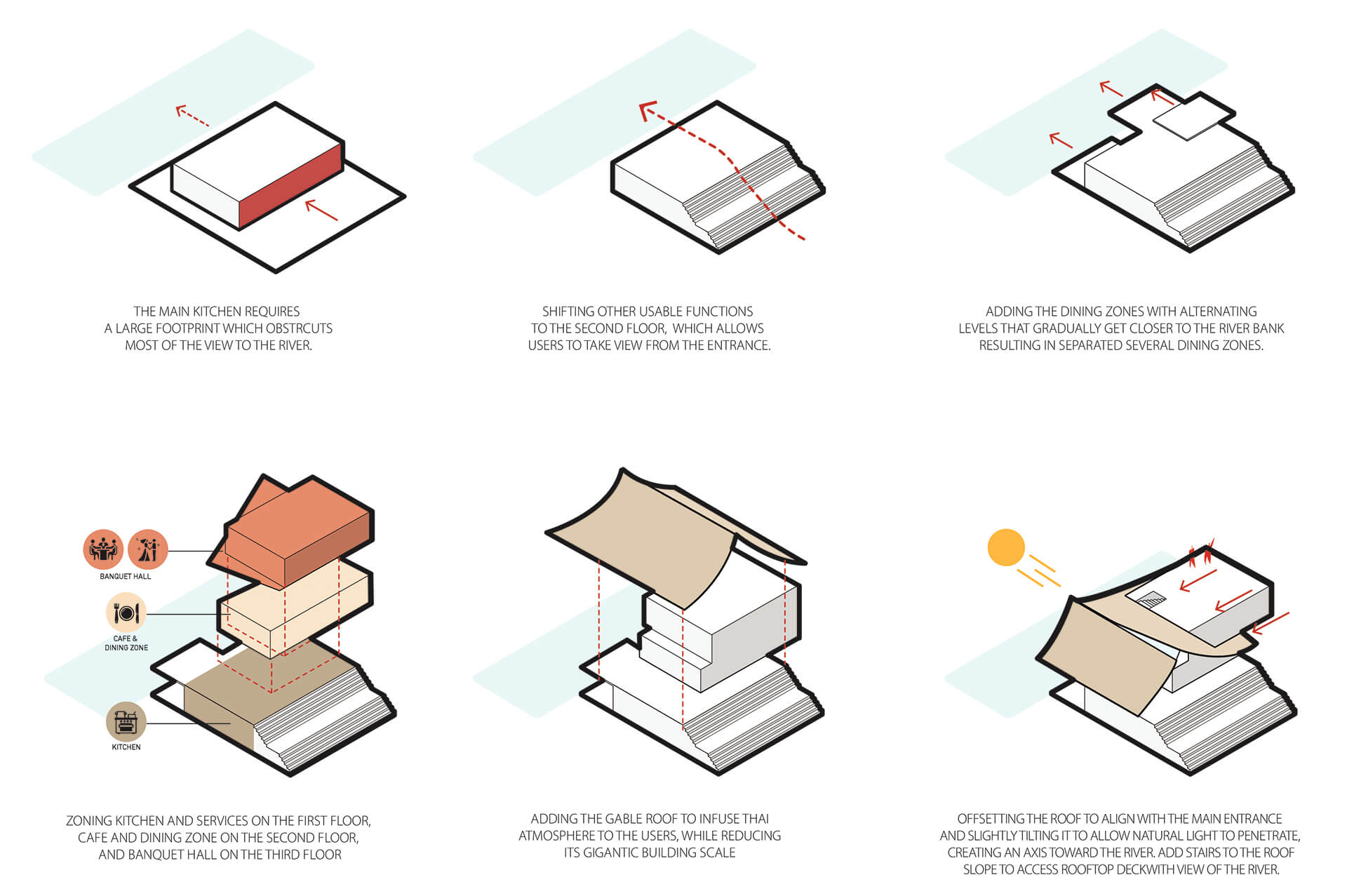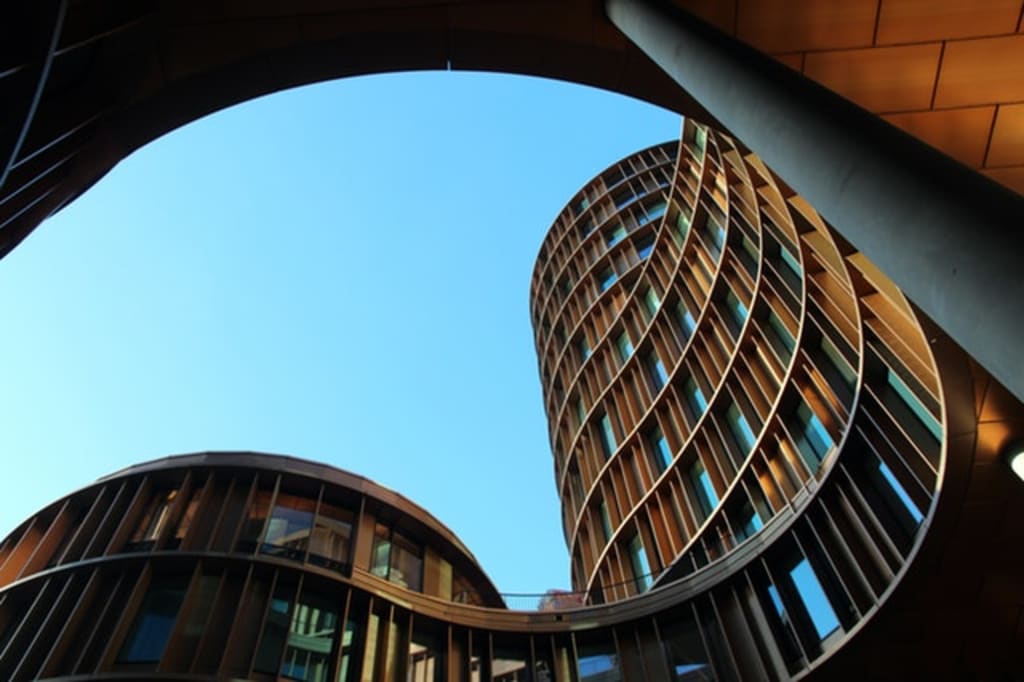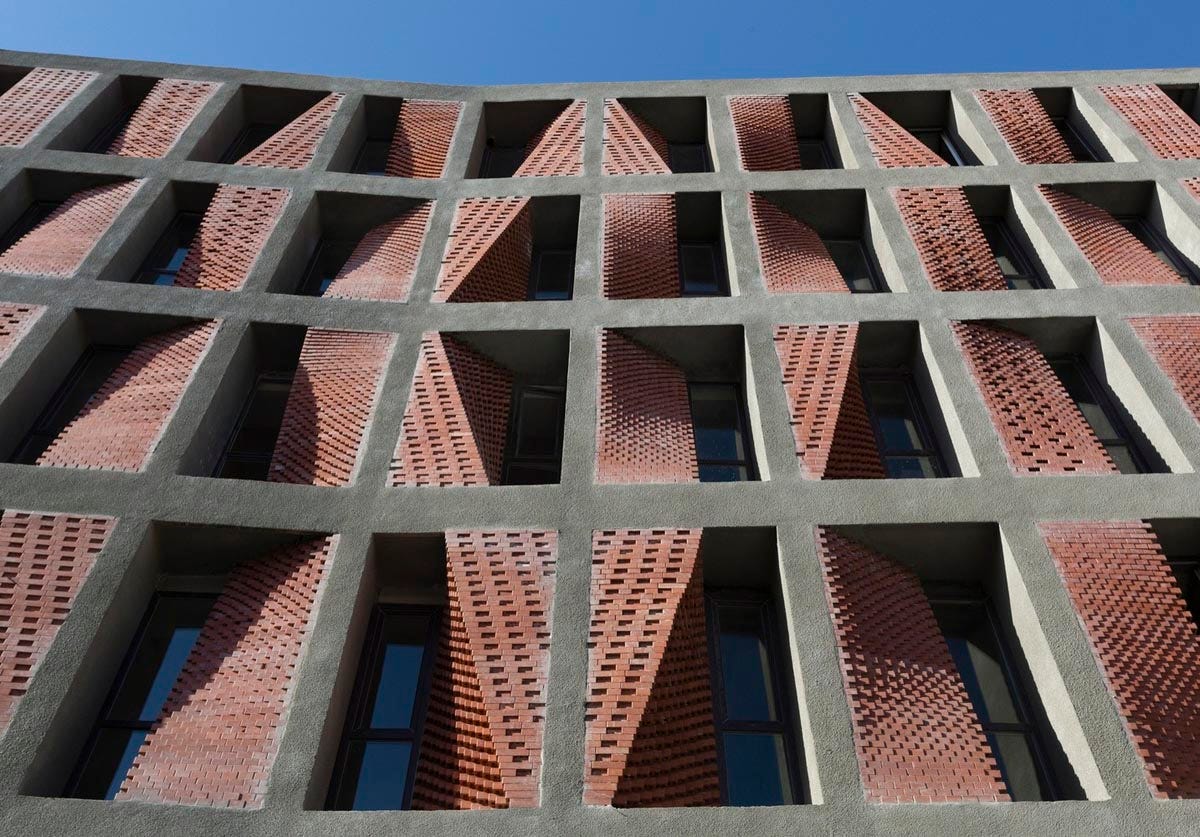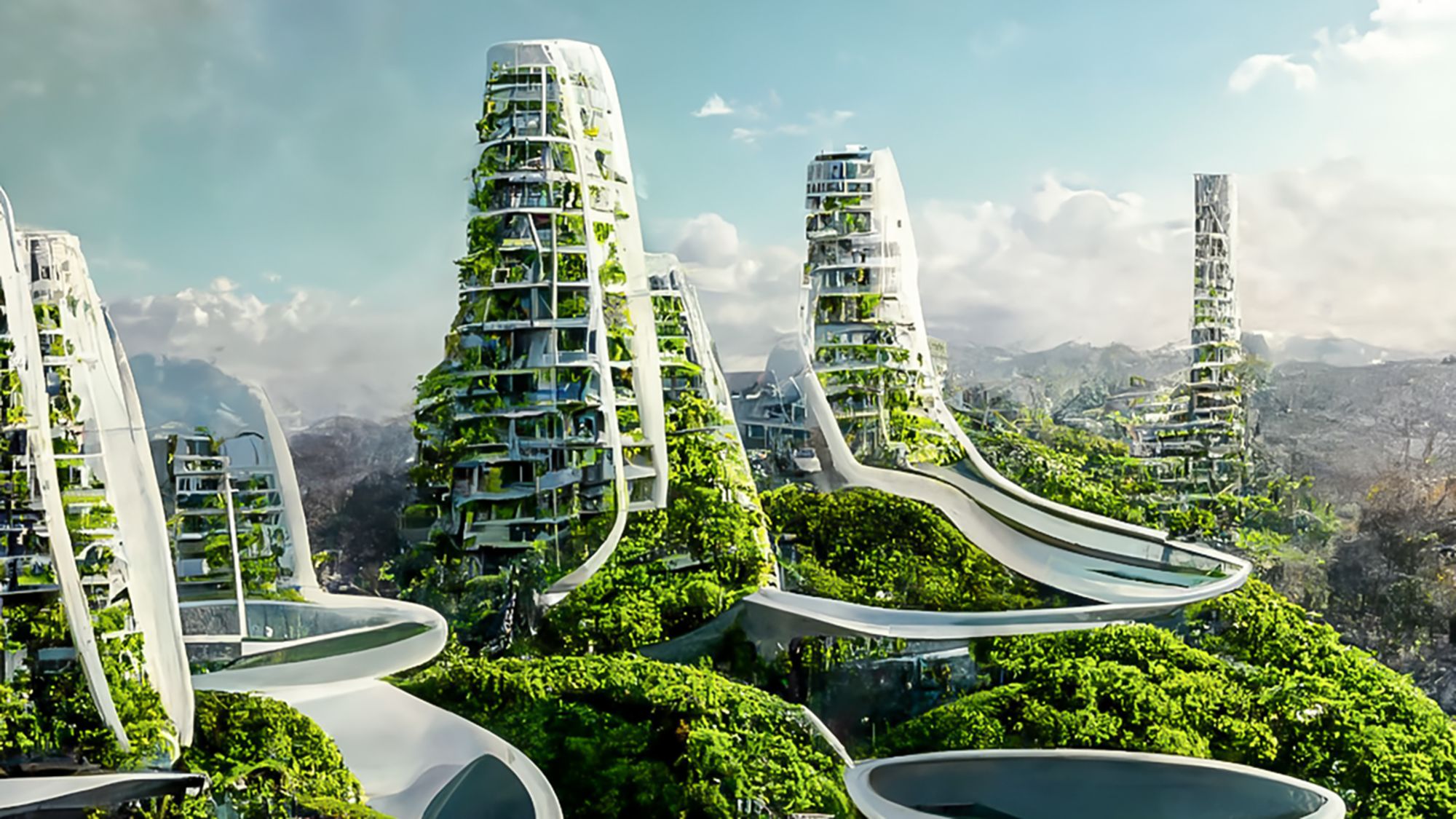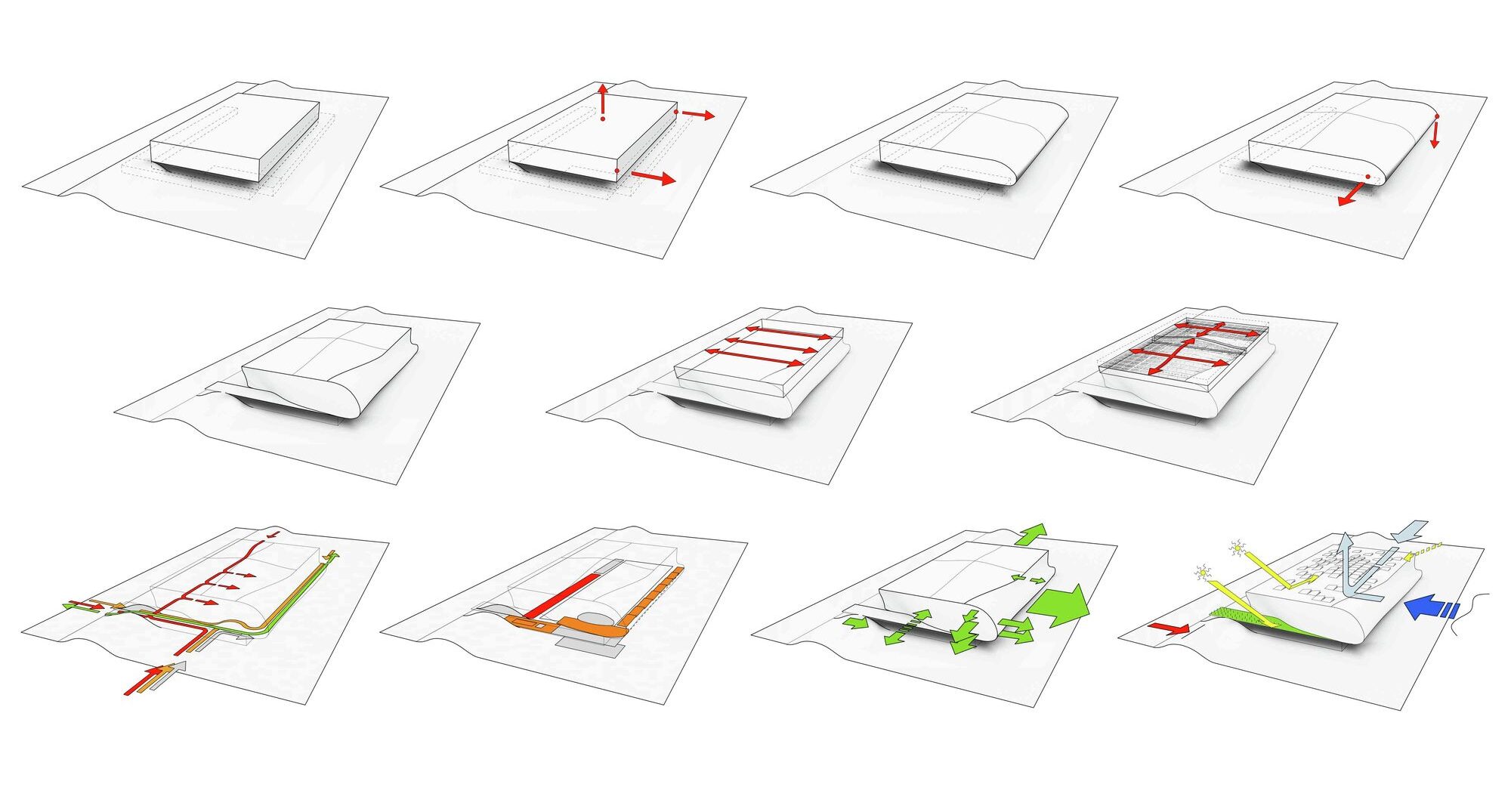
Architecture Concept Ideas, the art of shaping spaces and structures, holds a profound significance in human civilization's evolution. From ancient wonders like the Pyramids of Giza to modern marvels such as the Burj Khalifa, architectural concepts have been instrumental in defining cultural identity, societal progress, and technological advancements.
By delving into this narrative, readers will gain a comprehensive understanding of the pivotal role architectural concepts play in shaping our world. The exploration spans across different eras, encompassing diverse styles, materials, and philosophies that have influenced architectural design. Through insightful analysis and vivid examples, this article aims to ignite readers' curiosity and appreciation for various architectural ideas.
Fundamental Principles Of Architectural Design
While architectural styles may come and go, the foundations of good design remain timeless. Let's embark on a journey through the core principles that underpin successful architectural creations, focusing on those universal truths that hold sway regardless of era or technology.
1. The Dance Of Balance
1. Symmetry -Imagine a seesaw perfectly balanced. Architectural symmetry achieves a similar harmony, distributing elements evenly around a central axis. Consider the majestic Taj Mahal, where mirroring arches and delicate details create a sense of order and grandeur.
2. Asymmetry -But balance doesn't always require a twin. Asymmetrical designs can be equally captivating, using deliberate off-balance to create dynamic tension and visual interest. Think of the Guggenheim Museum, its spiraling form urging the eye upwards in a thrilling counterpoint to gravity.
2. Proportion - A Matter Of Scale
1. Hierarchy -Just like notes in a symphony, architectural elements must exist in a harmonious hierarchy. From grand entrance halls to intimate reading nooks, each space should occupy its rightful place in the overall composition. Picture a cathedral, where towering columns guide the gaze upwards, culminating in the awe-inspiring nave.
2. Human Scale -Buildings should never dwarf the people they shelter. Proportion ensures elements relate to human dimensions, fostering a sense of comfort and belonging. Imagine a cozy Japanese teahouse, where low ceilings and tatami mats invite a mindful connection with the surroundings.
3. Rhythm And Repetition - A Melodious Flow
1. Repetition -Like a repeated motif in a song, architectural elements can be echoed throughout a design, creating a sense of rhythm and unity. Imagine a row of Venetian palazzos, their arched windows and rhythmic columns weaving a harmonious melody along the canal.
2. Variation -Yet, monotony can tire the eye. Variation within repetition introduces subtle differences, keeping the rhythm engaging. Observe the intricate brickwork of a Gothic cathedral, where each stone, while part of the repeating pattern, boasts unique artistry.
4. Light And Shadow - A Play Of Contrast
1. Light -A master architect sculpts with light as much as with stone. Natural light, controlled and channeled, adds drama and dimension to space. Picture a sun-drenched atrium, where light dancing through glass creates a vibrant play of shadows and illuminates the heart of the building.
2. Shadow -The absence of light also plays a crucial role. Carefully placed shadows can define space, draw focus, and evoke a sense of mystery. Witness the Pantheon's oculus, where a single shaft of sunlight pierces the dome, bathing the interior in a dramatic spotlight.
5. Material And Texture - A Symphony Of Senses
1. Materiality -The very fabric of a building tells a story. Stone, wood, glass, each material lends its unique character and texture, shaping the emotional impact of the space. Imagine a rustic cabin enveloped by the warmth of natural wood, its rough-hewn surfaces whispering tales of nature.
2. Texture -Smooth polished marble, rough-hewn brick, each texture engages the tactile senses, adding depth and richness to the architectural experience. Consider a traditional Japanese garden, where raked gravel and moss-covered stones invite bare feet to connect with the natural world.
Beyond The Principles
These principles are not rigid rules but rather a guiding compass. Masterful architects bend and blend them, forging their own unique voices and pushing the boundaries of design. Remember, these are not formulas but seeds, the soil in which creativity and human experience take root to blossom into architecture that transcends mere function and touches the soul.
Innovative Materials In Modern Architecture
Modern architecture is no longer just about concrete and steel. A wave of innovative materials is transforming the way we design and build, pushing the boundaries of aesthetics, sustainability, and functionality. Let's dive into some of these groundbreaking materials and explore their impact on the built environment.
Bio-Inspired Materials
Nature is proving to be a treasure trove of inspiration for innovative architects. Materials like mycelium, the root structure of mushrooms, are being grown into bricks and insulation panels, offering biodegradable and carbon-negative alternatives to traditional building materials. Imagine buildings that literally grow, adapting to their environment and decomposing gracefully at the end of their life cycle.
Self-Healing Materials
Imagine a building that can patch up its own cracks! With self-healing concrete, embedded microcapsules filled with healing agents are released when a crack forms, triggering a repair process that extends the lifespan of the structure and reduces maintenance costs. This eliminates the need for constant repairs and minimizes environmental impact.
Kinetic Facades
Buildings are no longer static monoliths. Kinetic facades composed of movable panels or louvers respond to environmental conditions like sunlight and temperature, adjusting to optimize energy efficiency and occupant comfort. This dynamic interplay between architecture and environment creates buildings that breathe and adapt.
Transparent Wood
Imagine walls that let in light while maintaining privacy. Transparent wood, created by treating wood with a special polymer, retains the structural strength and warmth of its natural counterpart while allowing light to pass through, blurring the lines between interior and exterior spaces. This opens up possibilities for creative lighting effects and a deeper connection with nature.
Power-Generating Materials
Buildings can become miniature power plants! Materials like solar tiles and piezoelectric floors harvest energy from sunlight and footsteps respectively, reducing dependence on fossil fuels and contributing to energy independence. Imagine buildings that not only consume energy but also generate it, powering themselves and potentially even contributing to the grid.
Integrating Technology In Architectural Concepts
Forget static structures – modern architecture is embracing technology, transforming buildings into dynamic, responsive organisms that enhance our lives. Let's explore some cutting-edge technologies reshaping the way we design and experience architecture:
1. Smart Homes And Buildings
Imagine a home that anticipates your needs. Smart home technology integrates sensors, actuators, and AI to automate lighting, temperature, security, and even appliances. Picture waking up to sunlight gradually filling your bedroom, your coffee machine brewing as you stretch, and the thermostat adjusting to your preferred temperature.
2. Building Information Modeling (BIM)
BIM is not just 3D modeling on steroids. It's a collaborative platform that creates a virtual replica of a building, integrating architectural, structural, and MEP (mechanical, electrical, and plumbing) systems. This allows for clash detection, energy simulations, and even virtual walkthroughs before the first brick is laid, optimizing design, construction, and facility management.
3. Parametric Design And Generative Algorithms
These tools go beyond traditional drafting, allowing architects to define design rules and relationships between elements. The software then generates and optimizes countless design variations, enabling exploration of form, function, and sustainability in ways human intuition alone cannot. Imagine designing a building that adapts its shape to optimize for solar energy capture or natural ventilation.
4. Virtual Reality (VR) And Augmented Reality (AR)
VR immerses you in a virtual model of the building, letting you experience spaces and test design decisions before construction begins. AR overlays digital information onto the real world, allowing architects and clients to visualize how a building will fit into its existing environment. Imagine walking through a not-yet-built structure in VR or seeing how a new addition will blend with an existing building through AR.
5. Robotics And Additive Manufacturing
Robots are not just for factories anymore. They're increasingly used in construction for tasks like welding, bricklaying, and even 3D printing of building components. This can improve accuracy, efficiency, and safety, especially in hazardous or difficult-to-reach areas. Imagine a robot arm precisely laying complex brickwork or a 3D printer churning out customized building elements on-site.
Historical Influences In Contemporary Architecture
Contemporary architecture isn't just about sleek skyscrapers and glass facades. It's a tapestry woven with threads from the past, where historical styles and principles are reimagined for the modern world. Let's embark on a journey through time, exploring how the echoes of yesterday resonate in the architecture of today.
Classical Grandeur
The enduring elegance of Greek and Roman architecture finds contemporary expression in buildings that emphasize symmetry, proportion, and monumental forms. Imagine the Lincoln Memorial, echoing the Pantheon's majestic rotunda, or the Guggenheim Museum Bilbao, its titanium curves reminiscent of ancient amphitheaters.
Gothic Aspirations
The soaring Gothic spirit lives on in modern structures that reach for the sky. Pointed arches, dramatic vaulting, and intricate detailing can be found in contemporary churches, libraries, and even office towers. Witness the Sagrada Familia in Barcelona, its spires piercing the heavens, or the Hearst Tower in New York City, its crown evoking the gargoyles and pinnacles of Gothic cathedrals.
Vernacular Echoes
Local traditions and regional wisdom whisper through vernacular architecture's influence. Sustainable practices, natural materials, and adaptation to the environment inspire contemporary designs that respect context and celebrate place. Picture the earth-sheltered homes of the American Southwest, their design echoing the ancient pueblos, or the bamboo structures of Southeast Asia, embracing traditional building techniques.
Modernist Legacy
The minimalist ideals of the Bauhaus school resonate in contemporary architecture's emphasis on clean lines, functionality, and open spaces. Imagine the sleek glass and steel structures of modern cities, their interiors devoid of clutter, or the iconic Sydney Opera House, its geometric shells whispering the language of Le Corbusier and Mies van der Rohe.
Postmodern Playfulness
The playful defiance of postmodernism finds reflection in contemporary architecture's embrace of eclecticism, irony, and unexpected juxtapositions. Witness Frank Gehry's deconstructivist masterpieces, their forms seemingly defying gravity, or the colorful facades of Memphis Group-inspired buildings, challenging traditional notions of beauty.
Eco-Friendly And Sustainable Architectural Designs
The future of architecture isn't just about aesthetics and functionality; it's about building in harmony with the planet. Sustainable design has become paramount, with architects utilizing green building practices and eco-friendly materials to create structures that minimize their environmental impact.
Energy Efficiency
Reducing energy consumption is a cornerstone of sustainable design. This involves harnessing renewable energy sources like solar and wind power, utilizing passive heating and cooling principles, and employing high-performance insulation to minimize energy loss. Imagine buildings with rooftop solar panels glistening in the sun, strategically placed windows maximizing natural light, and green roofs providing natural insulation.
Water Conservation
Water is a precious resource, and efficient use is crucial in sustainable design. Architects employ rainwater harvesting, greywater systems for reusing treated water, and low-flow fixtures to minimize water consumption. Picture buildings adorned with rain barrels collecting rainwater, cleverly designed systems repurposing used water for irrigation, and sleek faucets trickling instead of gushing.
Sustainable Materials
Choosing eco-friendly materials is critical for reducing the environmental footprint of buildings. This includes utilizing recycled content, opting for locally sourced materials to minimize transportation emissions, and choosing materials with low embodiedcarbon, the carbon emissions associated with their production and transportation. Imagine walls built from reclaimed wood beams, floors crafted from locally quarried stone, and windows made from recycled aluminum frames.
Biophilic Design
The connection between humans and nature is vital for well-being, and biophilic design embraces this by incorporating natural elements into buildings. This can include maximizing natural light and ventilation, incorporating greenery like living walls and vertical gardens, and using natural materials like wood and stone to create calming and harmonious spaces.
Imagine stepping into a building where sunlight dapples through leaves on a living wall, a gentle breeze wafts through open windows, and the warmth of wood creates a sense of connection with the natural world.
Circular Economy
Sustainable design extends beyond construction, considering the entire lifecycle of a building. By embracing the principles of the circular economy, designers aim to minimize waste and maximize resource utilization.
This involves designing for disassembly and reuse of materials, utilizing modular components for adaptability and future changes, and considering the potential for biodegradable materials at the end of a building's lifespan..
Futuristic Architectural Concepts And Visions
The canvas of the future is vast, and architectureis poised to paint it with breathtaking strokes of innovation. Let's ditch the blueprints of today and embark on a speculative journey through five potential realms that might define the built environment of tomorrow:
1. Symbiotic Cities
Imagine bustling metropolises intertwined with nature, not isolated from it. Buildings sprout verdant vertical forests, their roots weaving through bio-receptive concrete. Algae facades paint skyscrapers with vibrant hues, absorbing carbon dioxide and producing renewable energy.
Streets pulse with self-charging pavements, while autonomous pods glide above, traversing networks of skygardens. Nature and technology merge, transforming cities into thriving ecosystems that breathe, adapt, and evolve alongside their inhabitants.
2. Adaptive Living Pods
Dwelling in the future might mean shedding the static concept of "home." Imagine portable, modular living pods that morph and adapt to your needs. Need extra space for a growing family? Simply snap on another pod. Craving the serenity of the mountains? Detach and relocate to a scenic cliffside.
These intelligent pods leverage advanced materials and AI to regulate temperature, optimize energy, and personalize living experiences, becoming adaptable havens that blur the lines between shelter and nomadic exploration.
3. Hyperconnectivity And Hyperreality
In the future, architecture might not just exist in the physical world. Imagine buildings augmented with layers of digital reality. Step into a museum and holographic exhibits whisk you through historical eras. Enter a restaurant, and projected aromas tempt your senses, conjuring the taste of distant lands.
Walls become interactive portals, connecting you to loved ones across continents, blurring the boundaries between physical and virtual spaces. Architecture transcends its brick-and-mortar limitations, becoming a canvas for immersive experiences that bend the very fabric of reality.
4. Interstellar Habitats
Humanity's gaze is turning towards the stars, and architecture will follow. Picture spaceborne habitats carved from asteroids, their interiors sculpted by microgravity and adorned with hydroponic gardens, providing oases for intrepid explorers.
Imagine celestial cities spinning in the void, constructed from self-replicating nanomaterials, their shimmering forms defying gravity and embracing the vastness of space. Architectural ingenuity will translate beyond Earth, shaping outposts amidst the constellations and igniting a new era of interstellar living.
5. Bioprinting And Transfiguration
What if buildings could grow? Imagine architects as nature sculptors, utilizing bioprinting technology to cultivate living structures. Buildings sprout from seeds, their walls woven from fungal mycelium, their roofs verdant ecosystems teeming with life.
These structures evolve and adapt, responding to their environment, repairing themselves, and breathing like living organisms. Architecture becomes a dynamic expression of nature, blurring the lines between technology and biology, and forging a symbiotic relationship between humanity and the very fabric of the built environment.
Utilizing Space And Environment In Architecture
Buildings aren't just isolated structures; they're part of a larger tapestry woven from environment, context, and human experience. To create truly compelling architecture, we must learn to dance with our surroundings, integrating with existing landscapes and urban fabrics in a way that fosters harmony and mutual respect. Here are some key principles to guide this delicate and rewarding conversation:
Sensitive Siting
The first step is finding the right place to begin the conversation. This means understanding the unique character of the environment, whether it's a rolling hillside, a bustling cityscape, or a serene coastline.
Buildings should be positioned to minimize disruption, respecting existing views, natural flows, and the existing rhythm of the space. Imagine a mountain lodge nestled discreetly within the forest, its silhouette echoing the contours of the peaks, or a modern skyscraper in the heart of a city, its form complementing the existing urban grid without overpowering it.
Embracing Context
A building shouldn't be an alien monolith. It should draw inspiration and cues from its surroundings, reflecting the local culture, history, and materials. Imagine a traditional Japanese pavilion overlooking a Zen garden, its minimalist lines and natural wood echoing the tranquility of the space, or a vibrant market in Morocco adorned with intricate tilework and arches, resonating with the rich artistic heritage of the region.
Honoring Topography
The land isn't a blank canvas; it's a living, breathing entity with its own topography and flow. Instead of imposing rigid structures, architects can embrace the existing contours, allowing buildings to gracefully rise from hillsides, nestle within valleys, or follow the natural paths of waterways.
Picture a winding stone pathway snaking around a hillside structure, mimicking the path of an ancient trail, or a series of bridges spanning across a river, echoing the rhythm of the flowing water.
Harnessing The Elements
Sunlight, wind, and water aren't enemies to be battled; they're partners in the dance of sustainable design. Buildings can be designed to capture natural light and warmth, utilize passive cooling through ingenious ventilation strategies, and even harvest rainwater for irrigation or other purposes.
Imagine a building with strategically placed windows maximizing natural light and warmth, or a structure with wind-catching towers channeling airflow for natural cooling, reducing reliance on energy-hungry machines.
Blurring The Boundaries
Instead of creating barriers, architecture can act as a bridge, seamlessly integrating indoor and outdoor spaces. This can be achieved through permeable facades, expansive windows, rooftop gardens, and courtyards, inviting nature into the heart of the structure.
Picture a museum with walls that open onto a sculpture garden, erasing the line between art and nature, or a restaurant with floor-to-ceiling windows overlooking a bustling city square, bringing the urban energy into the dining experience.
By embracing these principles, we can move beyond mere construction and create architecture that not only serves its function but also sings in harmony with its surroundings. Our buildings become extensions of the landscape, respectful partners in the urban fabric, and vibrant canvases for human life to unfold.
See Also: What Are Bubble Diagrams And How Are They Used In Architectural Design?
